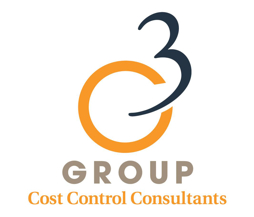Open Enrollment 2022 - Benefit Notices
Employers that sponsor group health plans should provide certain benefit notices in connection with their plans’ open enrollment periods. This Compliance Overview includes a chart that summarizes the benefit notices that employers should provide in connection with their 2022 open enrollment periods.
Other notices, such as the Women’s Health and Cancer Rights Act (WHCRA) notice, must be distributed annually. Although these annual notices may be provided at different times throughout the year, employers often choose to include them in their open enrollment materials for administrative convenience.
Read more by downloading our Compliance Overview below:
Industry Veteran Mitchell Hamilton Joins The C3 Group
Meet Mitchell Hamilton. Formerly a Site Director with proven experience delivering costs, recruiting top talent, and developing leaders at a Fortune 50 company, Mitch is an expert in maximizing efficiency, streamlining work, and delivering results for over 35 years. In addition, as site director, Mitch was a perennial award winner that also included multiple years in the top 3 of Site, Warehouse, Manufacturing awards of excellence, which includes winning the highest site award for the company 2 out of his last 4 years.
Offerings
Improvement in efficiency in the areas of people, efficiencies, time and money, that delivers increased profit and improved employee morale for the company.
Approach
Understanding strengths, opportunities, business values and objectives, through observations, interviews, and process reviews. Mitch utilizes his 35+ years of experience to work with the client to develop actions and strategies that improve on the opportunities while building on the strengths.
Qualifications
35+ years of experience of delivering proven exceptional results through the development of leaders, processes, efficiency tracking, and teams with a Fortune 50 company. Delivered P&L results over a period of 9 years, not only off setting inflation in wages, raw materials, and overhead, but also reduced the cost of manufacturing by over 5%. He delivered these results while maintaining less than 2% full time turnover, average IFR < 2 frequency and LTIF < .8 frequency, versus 3.4 and 2.9 respectively.
What that looks like for clients?
We take an active approach that includes on site walkthrough of operations with a knowledgeable leader in the organization and 1-1, round table meetings with key personnel understanding the actual and perceived pain points. We then take the information gathered and notes from observations to put together a proposal that meets the scope and desired outcome of the client.
What is not directly included?
- Margin Maximization: Product profitability
- Strategic Material Sourcing: procurement
- Change Management: managing change in the implementation of actions
- Bottleneck identification: pinch points in manufacturing and their value
Contact to Learn More
Contact Mitchell today to set up a free consultation to discuss your business's efficiency gaps with one of the industry top experts with over 35 years of experience!
Voluntary Benefits Benchmarking Overview
Introduction
In early 2021, employers across the country were surveyed about various employee benefits and human resources topics, and roughly 150 employers responded. The information collected demonstrates how employers across the country are utilizing their voluntary benefits. Most importantly, it shows how some are using voluntary benefits to combat the lingering effects of the COVID-19 pandemic. Voluntary benefits are those that employees can pick and choose from, offered in addition to core benefits (e.g., health insurance).
Typical voluntary benefits include dental coverage, vision insurance, financial counseling, critical illness insurance and others. Many voluntary offerings are 100% paid for by employees, but some employers may cover a portion of the premiums. As such, they can be an excellent way to provide meaningful perks to employees without raising costs. Amid the COVID-19 pandemic, these benefits have been particularly helpful. For many, COVID-19 has increased financial insecurity and negatively affected mental health. Voluntary benefits can help counteract these issues by arming employees with the tools they need to improve. And the survey data suggests exactly how some employers are leveraging their voluntary benefits.
Continue reading for key takeaways from the survey findings.
Download entire PDF below:
Level-Funded Insurance Plans: Helping to “Level” Healthcare Spending
Level-funding is quickly becoming the fastest growing trend in controlling employer-sponsored health insurance costs.
WHAT IS A LEVEL-FUNDED PLAN?
A level-funded health plan, also known as a partially self-funded plan, is a health insurance plan that combines the cost savings and customization aspect of a self-funding plan with the financial safety and predictability of fully funded plans. Level-funding is a form of self-insurance because an employer pays a steady fee each month.
Level funded health plans have recently been attracting more attention among smaller employers because there is little to no risk involved and they are exempt from ACA-mandated requirements. Here are the four main components that make up a level-funded plan: 
- Administrative Costs: Administrative costs are fixed and charged per employee and will not change regardless of claims. Employers must pay these costs for network availability, claims adjudication, and prescription network.
- Aggregate Stop Loss Coverage: Aggregate stop loss coverage covers the entire workforce and acts similarly to the way a family deductible would for employees. Once either the group’s aggregate stop loss or an employee’s specific stop loss has been met, reinsurance takes over and pays the claims from there.
- Claims: This is the variable portion of level-funded health plans, but also where the most cost savings can occur. Unfortunately, this is an area where level funded health plans provide opportunities for carriers to increase their profits at the expense of an employer. As with a fully-insured plan, the insurance carrier estimates the cost that an employer’s group policy will charge for the year (including all four components) and then divide that number by the total number of employees. This number equals each person’s total premium, before it is split between the employer and employee. The difference with level-funded health plans is that if the claims are lower than originally expected, the insurance company will refund part or the full amount of the unused funds back to the employer.
- Individual Stop Loss Coverage: Employers pay this stop loss insurance to remain protected in the event that an individual claim is extremely high in a given plan year. If this individual claim hits the stop loss deductible, the reinsurance reimburses the employer for the claims.
BENEFITS OF LEVEL-FUNDED PLANS
There are many benefits of level-funded plans, to both employees and employers, including:
- Cost Savings: Fully insured health plans remove most of the risks from the employer, making the cost of the plan much higher for the employee. In contrast, a self-insured plan places the most of the risk on the employer, but has the greatest chance for producing savings in the form of claims being lower than premiums for the employee. Therefore, Level-funded health plans are the best of both worlds, making partial self-funding an easier and attainable option for a larger portion of employers, like small businesses. These plans save money for both the employee and the employer!

- Plan Design: Level-funded health plans provide employers with far more flexibility in plan design and are exempt from some ACA regulations such as the 80/20 rule we talk more about below.
Regulation: Level-funded plans, even for small groups, do not have the same regulatory requirements as traditional, fully insured plans. This usually means that less administrative work is required from smaller companies who don’t have the same staffing size as larger ones. - Regulation: Level-funded plans, even for small groups, do not have the same regulatory requirements as traditional, fully insured plans. This usually means that less administrative work is required from smaller companies who don’t have the same staffing size as larger ones.
6 Benefits to Attract and Retain Small Business Employees
Attracting and retaining employees is a constant struggle for organizations of any size, but it’s particularly so for small businesses. With smaller teams, employers need to hold onto talent whenever possible. And that can be a challenge, especially when resources are scarce as they are currently amid the lingering effects of the COVID-19 pandemic.
That’s why it’s critical for small employers to tailor their benefits offerings in a way that attracts and retains the most employees. One of the best ways to start this process is by surveying existing and potential employees. Employers can ask workers what types of benefits would interest them the most, then use that data to inform benefits decisions.
While each workforce will have unique needs and interests, there are some commonalities seen among small business employees. This article outlines six of the most popular benefits that small businesses are using to attract and retain employees.
1. Health Insurance
Health insurance is consistently one of the most desired benefits among small business employees. That may be because health care is so expensive and is unaffordable without employer-sponsored insurance. Amid the COVID-19 pandemic, having good health coverage is more critical than ever. This provides employers with an opportunity. By offering generous health benefits, employers can compete for top talent. In fact, doubling down on health insurance might be a better option for some employers than adding other ancillary benefits that employees don’t need or want.
2. Leave Benefits
The ability to take time away from work is an important consideration for employees. And, in the wake of the COVID-19 pandemic, employees may have more caregiving responsibilities than they had before—making scheduling flexibility all the more important. Leave benefits will vary by workplace, but they typically include paid time off (PTO), vacation days and sick time. These types of leave usually come with specific use requirements. For employers looking to attract and retain employees, expanding these benefits could be a great leverage tool. This may include allowing faster PTO accrual, providing more sick days or allowing for flexible scheduling.
3. Performance Bonuses
Employees want to be recognized for their hard work. Failing to do so can lower morale and affect retention. Introducing performance bonuses as an employee benefit can be a way to combat this. Performance bonuses will vary, but the general idea is to compensate employees in some way for a job well done. How this looks in practice will depend on the employer. For instance, employees might receive incentives such as gift cards, cash, additional PTO or other perks, depending on their achievement. However, before implementing such bonuses, employers should ensure compliance with any applicable workplace laws regarding employee compensation.
4. Retirement Planning
Financial security is very important to employees, and that sentiment grows as employees near retirement age. It’s also top of mind for those struggling financially thanks to the COVID-19 pandemic. Employees invest their time and energy into their work. As a tradeoff, many employees want their employers to invest service. Offering a 401(k) with contribution matching can be a powerful attraction and retention tool, as it demonstrates an employer’s investment in their workers in the long term.
5. Professional Development
Employees may leave a workplace simply because they want other opportunities or need more of a challenge, rather than being driven solely by compensation. Additionally, surveys suggest employees have been putting off job changes during the COVID-19 pandemic, meaning a wave of turnover may be coming soon. Employers may want to think proactively about ways to keep employees around.
In other words, when it comes to top performers, employers should be reluctant to let these employees go. That’s where professional development comes in. Generally, this involves cross-training employees on other positions or otherwise preparing them to take on additional responsibilities. This helps provide the employee with more growth opportunities while still keeping them within the business. Offering such development opportunities also signals to prospective employees that a workplace has upward mobility and is willing to help workers along with their career pathing goals—two factors that can weigh heavily in recruiting conversations.
6. Wellness Benefits
Wellness is a hot topic these days, and employees are looking more and more for employers who take wellness seriously. This can be especially true in the wake of the COVID-19 pandemic, where health consequences are interwoven with everyday decisions. In fact, through the lens of the pandemic, ignoring wellness initiatives may be interpreted as ignoring overall health—something employers obviously want to avoid.
Different workplaces will offer different wellness benefits, but the purpose of any of them is generally to increase employees’ overall well-being. For instance, benefits may include mental health counseling, health breakroom snacks, gym memberships, fitness trackers, yoga sessions or other perks. When it comes down to it, employees want to feel like their employers care about them as individuals. This means prioritizing well-being.
Conclusion
Knowing which employee benefits to offer as attraction and retention tools isn’t always easy. One of the best places to start is by surveying current and prospective employees, as the offerings are meant for them. Beyond that, the perks listed in this article have been shown to be popular among employees—making them a viable option to try as well.
However, these benefits aren’t employers’ only option to help attract and retain employees. Reach out to C3 Group LLC today to learn more about these perks and other potential incentives.
Download FULL article below:
Legal Update: IRS Issues Guidance on American Rescue Plan’s COBRA Subsidy
IRS Issues Guidance on American Rescue Plan’s COBRA Subsidy
On May 18, 2021, the IRS issued Notice 2021-31, a guidance document on the American Rescue Plan Act (ARPA) subsidy for continuation health coverage under the Consolidated Omnibus Budget Reconciliation Act of 1985 (COBRA).
The Notice discusses the background of the subsidy and includes 86 questions and answers (Q&As) about its application.
The COBRA Subsidy
The ARPA subsidy covers 100% of COBRA and state mini-COBRA premiums from April 1–Sept. 30, 2021, for certain assistance-eligible individuals whose work hours were reduced or whose employment was involuntarily terminated. The subsidy is funded via a tax credit provided to employers, insurers or group health plans, according to the terms of the statute.
The IRS Guidance
Among the topics covered by the 40-page Notice are how to calculate and claim the tax credit, including when a third-party payer is involved. According to the guidance, employers must document individuals’ eligibility for COBRA premium assistance in order to claim the credit.
The Q&As further clarify that:
- The subsidy is available for extended periods of COBRA coverage between April 1 and Sept. 30, 2021, due to a disability, second qualifying event or extension under state mini-COBRA.
- Involuntary termination includes constructive discharge and termination for cause, but not gross misconduct.
- Health reimbursement arrangements, dental-only plans and vision-only plans are covered by the subsidy.
Download entire PDF below:
Pennsylvania Compliance Bulletin: May 2021
HSA/HDHP Limits Increase for 2022
On May 10, 2021, the IRS released Revenue Procedure 2021-25 to provide the inflation-adjusted limits for health savings accounts (HSAs) and high deductible health plans (HDHPs) for 2022. The IRS is required to publish these limits by June 1 of each year. These limits include:
- The maximum HSA contribution limit;
- The minimum deductible amount for HDHPs; and
- The maximum out-of-pocket expense limit for HDHPs.
These limits vary based on whether an individual has self-only or family coverage under an HDHP.
Eligible individuals with self-only HDHP coverage will be able to contribute $3,650 to their HSAs for 2022, up from $3,600 for 2021. Eligible individuals with family HDHP coverage will be able to contribute $7,300 to their HSAs for 2022, up from $7,200 for 2021. Individuals who are age 55 or older are permitted to make an additional $1,000 “catch-up” contribution to their HSAs.
The minimum deductible amount for HDHPs remains the same for 2022 plan years ($1,400 for self-only coverage and $2,800 for family coverage). However, the HDHP maximum out-of-pocket expense limit increases to $7,050 for self-only coverage and $14,100 for family coverage.
Employers that sponsor HDHPs should review their plan’s cost-sharing limits (minimum deductibles and maximum out-of-pocket expense limit) when preparing for the plan year beginning in 2022. Also, employers that allow employees to make pre-tax HSA contributions should update their plan communications for the increased contribution limits.
Download entire bulletin below:







